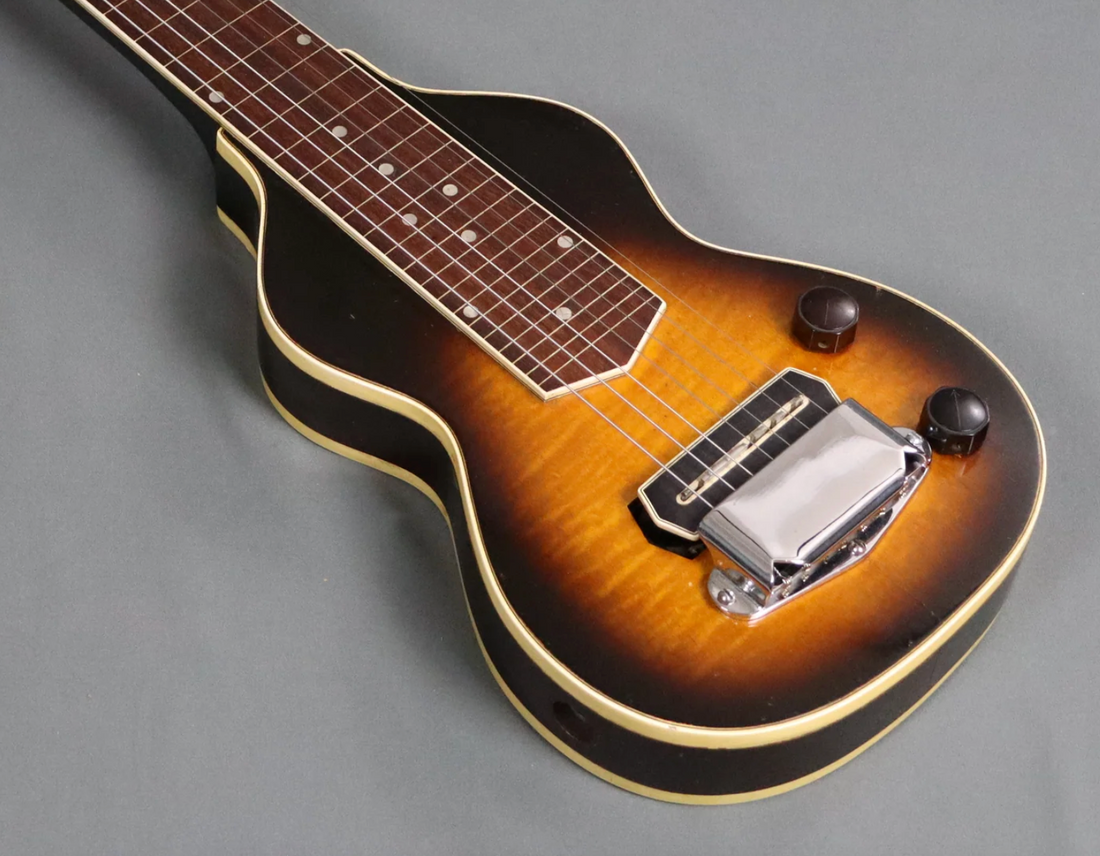It seems like the number one question beginner steel guitar players ask is, “What tuning should I start on?” The steel guitar’s “tuning” name comes from the cord created when all of its open strings are played together.
There is a huge variety of options for players to try, each with its own sound and technical benefits. Many players land on specialized tuning to suit their playing style and genre. But they typically do so after starting on one of the standard tunings listed below.
When first starting out, picking a tuning can be daunting for inexperienced players. This blog will explore and explain a few of the most popular starting tuning players choose and what their various benefits are.
1. Open G Tuning
Open G Tuning is a very popular tuning for lap steel guitar. It's often one that players start on when learning Dobro style lap steel. In the "low bass" version of tuning the strings are tuned to the notes D-G-D-G-B-D, from low to high. This tuning is also used for standard guitar playing.
Variants include "high bass G" which is spelled G-B-D-G-B-D. This tuning is especially popular with Bluegrass players. Early Hawaiian players typically used these tunings as well, but often raise their corresponding pitches to the key of A (A-C#-E-A-C#-E).
Open G tuning benefits from the wide distribution of learning materials and the number of song transcription tabs which are commercially available. The tuning is known for its bright and resonant sound, and it is also sometimes used in blues, and rock slide guitar playing.
2. C6 Tuning
Another popular tuning for lap steel guitar is open C6 tuning. It is a very versatile tuning that is commonly used in lap steel guitar playing. In this tuning, the strings are tuned to the notes C-E-G-A-C-E, from low to high. C6 tuning allows for a wide range of chord voicings and melodic possibilities. The availability of straight bar Major and Minor chords make it easy for the novice player to explore a wide range of easily accessible sounds quickly. It is very popular in more modern Hawaiian music, and is also well suited for various other musical genres, including Western Swing and jazz. C6 also has a lot of learning resources available for beginner and advanced players.
3. Open D Tuning
Open D tuning is one of the most widely used tunings for lap steel guitar. In this tuning, the strings are tuned to the notes D-A-D-F#-A-D from low to high. It is popular in part because it can use a set of standard guitar strings to achieve its open chord. This tuning allows for rich, resonant chords and is often favored by rock, blues, and country players. This tuning works well for solo steel accompaniment for vocal performances since the root and 5th of an open or straight bar chord are readily available on the lowest two strings.
5. E7 Tuning
E7 tuning is another commonly used in blues and rock music. The strings are tuned to the notes E-G#-B-D-E-G# from low to high. This tuning allows for easy access to dominant seventh chords and is great for playing bluesy licks on the slide guitar. The simplicity of the tuning's layout makes it accessible for beginners, allowing them to explore slide guitar techniques and create music with relative ease. It is a popular tuning for beginner steel guitarists who have a background in standard guitar.
6. A6 Tuning
A6 tuning is often used in Western Swing, Country, and jazz music. The strings are tuned to the notes C#-E-G-A-C#-E from low to high. This tuning offers a wide range of chord voicings and melodic possibilities, making it a favorite among lap steel guitarists looking to explore different musical styles. While similar to C6 it offers a lower voicing and features the 5th scale tone of the open chord on top.
Steel Guitars With More Strings
Lap steel guitars are also available with a larger number of strings. Many beginning players choose to start on 6 and increase the number of strings they want to use later. However it is not uncommon to start on an 8 string guitar. Often the extra strings on these bigger guitars extend the lower range of the instrument. But In some cases a player may choose to add strings within a tuning, or on top. For example, C6 players chooses to add a high G above the top E in the 6 string spelling. It's really up to the payer to decide how to use the extra range.
Steel Guitars With More Necks
Many steel guitarists wind up learning multiple tunings and don't want to retune between songs. So manufacturers started creating steel guitars with more than one neck. This actually started prior to the invention of the electric guitar, but these early acoustic double necks are hard to find in playable condition, if one can be located at all. In the 1950s, it became very popular for "Console Steel" guitars, the direct predecessor to the modern Pedal Steel, to have up to four differently tuned necks. As you learn more and more tunings, having one of these instruments can really help broaden your sound!
In Conclusion
These are just a few examples of the most popular lap steel guitar tunings. Each tuning has its own unique characteristics and lends itself to different styles of music. Whether you're a beginner or an experienced player, experimenting with different tunings can open up a world of possibilities and help you find your own unique sound.
Check out the Lap Steel Guitars currently available at AntiquiTone HERE!

